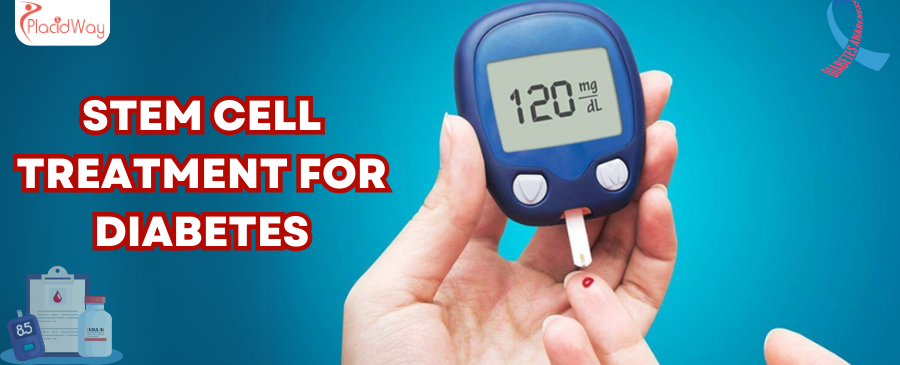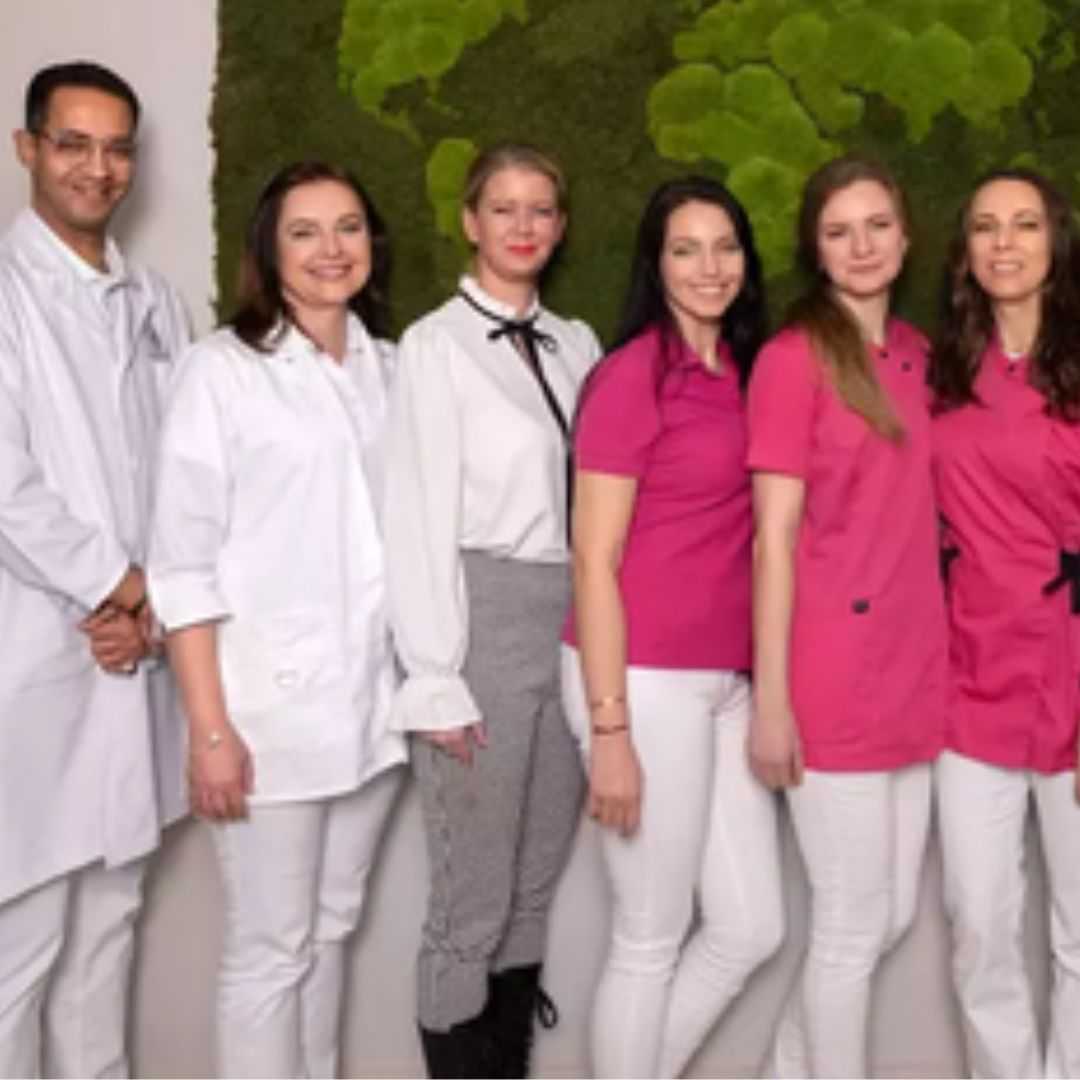
Stem Cell Therapy for Diabetes: A New Horizon for Managing Your Health
Living with diabetes often means a lifelong journey of managing blood sugar, medication, and the constant threat of complications. For many, the hope of a "cure" or even significant remission feels like a distant dream. But what if there was an innovative approach offering renewed hope? Stem cell treatment for diabetes is emerging as a promising frontier, exploring the body's natural regenerative capabilities to address the root causes of this complex condition, particularly for those seeking advanced solutions and exploring medical tourism options.
Diabetes, affecting millions worldwide, manifests primarily as two types: Type 1 Diabetes (T1D) and Type 2 Diabetes (T2D). T1D is an autoimmune disease where the body mistakenly attacks and destroys insulin-producing beta cells in the pancreas. T2D, far more common, involves insulin resistance and, eventually, insufficient insulin production. Traditional treatments focus on managing symptoms—insulin injections, oral medications, and lifestyle changes—but they don't reverse the underlying cellular damage or immune dysfunction.
This is where stem cell therapy comes into play. Researchers are investigating how these remarkable cells, with their ability to differentiate into various cell types and modulate immune responses, could potentially restore healthy pancreatic function, reduce inflammation, and improve glucose regulation. Patients often search for "new diabetes treatment," "cure for type 1 diabetes," or "reverse type 2 diabetes," reflecting a deep desire for more definitive solutions. Stem cell therapy offers a potential pathway toward these goals, and many patients are now looking internationally to access these cutting-edge procedures.
Whether you're struggling with the daily challenges of insulin dependence or seeking improved blood sugar control, understanding stem cell treatment for diabetes can open up new possibilities. This guide will delve into the procedure, its potential benefits, eligibility, costs, and what to consider if you're exploring this advanced therapy abroad.
Symptoms of Diabetes: What are the warning signs?
Diabetes symptoms can vary by type and individual, sometimes developing gradually over time, especially with Type 2 Diabetes. It’s important to be aware of the signs, as early detection can prevent severe complications. Patients often search for "early signs of diabetes" or "how to know if I have diabetes."
Common symptoms for both Type 1 and Type 2 Diabetes include:
- Frequent Urination (Polyuria): Your kidneys work harder to remove excess sugar from your blood, leading to more trips to the bathroom.
- Increased Thirst (Polydipsia): As you urinate more, your body loses fluids, prompting you to drink more.
- Increased Hunger (Polyphagia): Even after eating, your cells might not be getting enough energy, leading to constant hunger.
- Unexplained Weight Loss: Especially in Type 1 Diabetes, the body breaks down muscle and fat for energy due to lack of insulin.
- Fatigue: Lack of energy in your cells can make you feel tired and sluggish.
- Blurred Vision: High blood sugar levels can affect the lenses of your eyes, causing temporary vision changes.
- Slow-Healing Sores or Frequent Infections: High glucose levels impair the body's natural healing process and immune function.
- Tingling or Numbness in Hands/Feet (Neuropathy): A sign of nerve damage from prolonged high blood sugar.
Type 1 Diabetes symptoms often appear suddenly and are more severe, while Type 2 Diabetes symptoms can be mild or absent, leading to late diagnosis.
Causes and Risk Factors of Diabetes: Why me?
Understanding the causes and risk factors can help in prevention and management. Patients often ask, "What causes Type 1 diabetes?" or "Risk factors for Type 2 diabetes."
- Type 1 Diabetes: This is an autoimmune condition where the immune system mistakenly attacks and destroys the insulin-producing beta cells in the pancreas. Genetic susceptibility plays a role, but environmental triggers (like viruses) are also believed to contribute. It's not linked to diet or lifestyle choices.
- Type 2 Diabetes: This type is a complex interplay of genetic and lifestyle factors.
- Insulin Resistance: Cells stop responding effectively to insulin, meaning glucose can't enter them for energy.
- Pancreas Overload: The pancreas tries to compensate by producing more insulin, but eventually, its beta cells wear out and can't produce enough.
- Genetic Predisposition: If you have a family history of Type 2 Diabetes, your risk increases.
- Obesity and Inactivity: Excess weight, especially around the waist, and a sedentary lifestyle are major risk factors.
- Diet: Diets high in processed foods, sugar, and unhealthy fats can contribute to insulin resistance.
- Age: Risk increases with age, though Type 2 is increasingly seen in younger people.
- Ethnicity: Certain ethnic groups have a higher predisposition.
How Does Stem Cell Treatment for Diabetes Work? Understanding the Procedure
Stem cell therapy leverages the unique properties of stem cells to repair, replace, or protect damaged tissues. For diabetes, the primary goals are:
- Regeneration of Beta Cells: Stem cells have the potential to differentiate into new, functional insulin-producing beta cells, replacing those destroyed in Type 1 Diabetes or worn out in Type 2.
- Immune System Modulation: For Type 1 Diabetes, certain stem cells (like Mesenchymal Stem Cells or MSCs) can suppress the autoimmune attack on beta cells, protecting existing and newly formed cells.
- Reducing Inflammation: Stem cells can secrete anti-inflammatory factors that create a healthier environment for pancreatic function and overall metabolic health.
- Improving Insulin Sensitivity: Some stem cell types may help improve how the body's cells respond to insulin, which is crucial for Type 2 Diabetes.
Types of Stem Cells Used:
- Mesenchymal Stem Cells (MSCs): Often sourced from bone marrow or adipose (fat) tissue, MSCs are favored for their immunomodulatory and regenerative properties. They can suppress immune attacks and promote tissue repair.
- Hematopoietic Stem Cells (HSCs): Found in bone marrow, HSC transplants (usually autologous, meaning from the patient's own body) have been studied for their ability to "reset" the immune system in Type 1 Diabetes, halting the autoimmune attack.
- Induced Pluripotent Stem Cells (iPSCs): These are adult cells genetically reprogrammed to an embryonic stem cell-like state, offering a highly promising avenue for creating patient-specific beta cells in the lab for transplantation, though still largely experimental.
The cells are typically administered intravenously, directly into the pancreas, or subcutaneously, depending on the specific protocol and desired outcome.
Am I a Candidate for Stem Cell Therapy for Diabetes? Eligibility Criteria
Not everyone with diabetes is an ideal candidate for stem cell therapy. Eligibility varies greatly depending on the specific protocol, the clinic, and the type of diabetes. Patients often search for "who is eligible for stem cell diabetes treatment" or "criteria for stem cell therapy diabetes type 1."
General considerations include:
- Type 1 Diabetes:
- Recent Diagnosis: Often, patients with a more recent diagnosis (within 1-5 years) are better candidates as they may still have some residual beta-cell function to protect.
- C-peptide Levels: Detectable C-peptide levels indicate that the pancreas still produces some insulin, making the therapy more likely to succeed in preserving or enhancing function.
- Age: Younger patients often respond better, but adult trials are also ongoing.
- Absence of Severe Complications: Patients with advanced kidney disease, severe neuropathy, or active infections may not be suitable.
- Type 2 Diabetes:
- Good Overall Health: Patients should generally be in good health without major organ dysfunction.
- C-peptide Levels: While insulin resistance is key, some degree of pancreatic function is still desirable.
- Controlled Complications: Pre-existing complications should be stable and managed.
- Willingness to Commit to Lifestyle Changes: Stem cell therapy is not a magic bullet; it works best alongside healthy living.
A comprehensive evaluation, including blood tests, imaging, and a review of your medical history by a specialist, is essential to determine if this treatment is right for you.
What to Expect: The Stem Cell Treatment Process for Diabetes
Undergoing stem cell therapy is a multi-step process. While protocols vary, here’s a general overview of what patients can expect:
- Initial Consultation and Evaluation: This involves a thorough review of your medical history, current diabetes management, and diagnostic tests to confirm eligibility and tailor a treatment plan.
- Stem Cell Harvesting (if autologous): If using your own cells (autologous), a minor procedure will be performed to collect them.
- Bone Marrow Aspiration: Bone marrow is typically collected from the hip bone under local anesthesia.
- Adipose (Fat) Tissue Extraction: A small amount of fat is removed, usually via liposuction, also under local anesthesia.
- Cell Processing: The collected cells are then sent to a specialized lab where they are isolated, purified, and expanded (multiplied) to reach the therapeutic dose required. This process can take several days to weeks.
- Stem Cell Administration: Once processed, the stem cells are delivered to the patient. Common methods include:
- Intravenous (IV) Infusion: The most common method, allowing the cells to circulate throughout the body and home in on areas of inflammation or damage.
- Local Injection: In some cases, cells may be injected directly into or near the pancreas.
- Subcutaneous Injection: Injected under the skin.
- Post-Procedure Monitoring: After cell administration, patients are monitored for a short period to ensure no immediate adverse reactions.
- Follow-up: Regular follow-up appointments are crucial to track progress, adjust medications, and manage any potential side effects. This often includes blood tests (HbA1c, C-peptide), glucose monitoring, and clinical evaluations.
The entire process, from evaluation to initial follow-up, can span several weeks or months, depending on the clinic and protocol.
Recovery Time and Expectations After Stem Cell Treatment for Diabetes
One of the appealing aspects of many stem cell therapies is the relatively minimal recovery period associated with the procedure itself. However, the biological changes take time. Patients often inquire about "how long does it take for stem cells to work for diabetes" or "what to expect after stem cell therapy."
- Immediate Post-Procedure: If you underwent an autologous harvest (bone marrow or fat), there might be mild soreness or bruising at the collection site for a few days. The cell administration itself is usually quick and non-invasive, with no significant downtime. Most patients can resume light activities within 24-48 hours.
- Onset of Therapeutic Effects: The regenerative processes initiated by stem cells are not immediate. You won't wake up "cured" the next day. Improvements in blood sugar control, reduction in insulin requirements, or C-peptide increases typically become noticeable over several weeks to months, sometimes taking up to six months or even a year to reach their full potential.
- Ongoing Management: It's critical to understand that stem cell therapy is an adjunct, not a replacement for medical care. You will continue to monitor your blood glucose, take prescribed medications (which may be adjusted by your doctor), and maintain a healthy lifestyle.
- Long-Term Expectations: While some patients experience significant improvements, including reduced insulin dosage or even temporary remission, long-term outcomes can vary. The goal is often to improve quality of life, minimize complications, and potentially slow the progression of the disease.
Risks and Side Effects of Stem Cell Therapy for Diabetes: What should I know?
Like any medical procedure, stem cell therapy carries potential risks and side effects, though serious complications are rare, especially with autologous (patient's own) cells. Patients often search for "is stem cell treatment safe for diabetes" or "stem cell therapy diabetes dangers."
- Related to Cell Harvesting (if autologous):
- Infection: At the bone marrow aspiration or liposuction site.
- Pain/Bruising: Temporary discomfort at the collection site.
- Bleeding: Minor bleeding.
- Related to Cell Administration:
- Localized Reactions: Swelling, redness, or pain at the injection site.
- Transient Flu-like Symptoms: Fever, chills, fatigue, or headache, usually subsiding within 24-48 hours.
- Allergic Reaction: Rare, but possible, especially with donor cells or certain processing agents.
- General Risks of Stem Cell Therapy:
- Infection: Although rare with proper sterile techniques.
- Immune Reaction/Rejection: Primarily a concern with allogeneic (donor) cells; autologous cells mitigate this risk significantly.
- Tumor Formation (Teratomas): A theoretical risk, particularly with embryonic or iPS cells if not fully differentiated before transplantation. This risk is extremely low with MSCs or HSCs, especially when harvested from adults.
- Ineffectiveness: The therapy might not produce the desired results for every patient.
It's crucial to discuss all potential risks with your medical team and choose a clinic that adheres to strict safety protocols and ethical guidelines.
Worldwide Cost Comparison for Stem Cell Diabetes Treatment: How much does it cost?
One of the primary drivers for patients exploring stem cell therapy abroad is the significant cost difference compared to Western countries, particularly the USA. Patients frequently search for "stem cell therapy cost diabetes" or "affordable diabetes stem cell treatment."
The cost is highly variable and depends on:
- Country and Clinic: Countries with lower operating costs often offer more affordable treatments.
- Type of Stem Cells Used: Autologous (from your own body) versus allogeneic (donor) cells.
- Number of Cells/Infusions: More extensive protocols or multiple infusions will increase the cost.
- Inclusions: Some packages include accommodation, transportation, and follow-up, while others do not.
Here’s an approximate cost comparison (prices are estimates and can change):
| Country | Estimated Cost Range (USD) | Key Considerations |
|---|---|---|
| United States | $30,000 - $80,000+ | High cost, often limited to clinical trials or very specific licensed treatments. |
| Mexico | $10,000 - $25,000 | Popular medical tourism destination, reputable clinics, advanced therapies. |
| Germany | $20,000 - $40,000 | Strict regulations, high quality, often innovative research-backed treatments. |
| India | $7,000 - $20,000 | Very competitive pricing, growing medical tourism hub, experienced doctors. |
| Thailand | $12,000 - $28,000 | Excellent patient care, modern facilities, often attractive packages. |
It’s crucial to get a detailed quote that outlines all included services and potential additional costs.
Why Consider Stem Cell Treatment for Diabetes Abroad?
The decision to seek medical treatment abroad, or "medical tourism," is often driven by several compelling factors, especially for innovative therapies like stem cell treatment for diabetes. Patients search for "medical tourism for diabetes stem cells" or "why go abroad for diabetes treatment."
- Cost Savings: As seen in the cost comparison, the same or similar quality of care can be significantly more affordable in certain countries, making advanced treatments accessible to more people.
- Access to Advanced Therapies: Some cutting-edge stem cell protocols may be available in clinics abroad before they are widely approved or integrated into standard practice in a patient's home country.
- Reduced Waiting Times: In some healthcare systems, waiting lists for specialized treatments can be long. Traveling abroad can offer quicker access to care.
- Privacy and Anonymity: Some patients prefer the discretion that comes with receiving treatment away from home.
- Expertise and Specialization: Certain international clinics and doctors have developed particular expertise in stem cell applications for diabetes, drawing patients from around the globe.
- Combine Treatment with Travel: The opportunity to recover in a pleasant environment or combine the medical trip with a vacation can be appealing.
Which Countries Offer the Best Value for Diabetes Stem Cell Therapy?
When seeking quality and value for stem cell treatment, several countries stand out as top destinations for medical tourists:
- Mexico: Renowned for its proximity to the US, Mexico offers numerous reputable clinics specializing in regenerative medicine. Cities like Tijuana and Cancun have established themselves as medical tourism hubs, providing advanced treatments at a fraction of US costs.
- India: A rapidly growing medical tourism destination, India boasts highly skilled doctors, state-of-the-art hospitals, and very competitive pricing across a range of specialties, including stem cell therapy.
- Germany: Known for its rigorous medical standards and leading research, Germany offers high-quality stem cell treatments. While costs might be higher than in Asia or Latin America, the reputation for safety and innovation is a significant draw.
- Thailand: Combining excellent healthcare infrastructure with a vibrant culture, Thailand provides attractive medical tourism packages. Many hospitals are internationally accredited, and patient care is a high priority.
- South Korea: A leader in biomedical research and technology, South Korea is home to advanced stem cell therapies, often at competitive prices compared to Western nations, albeit with a higher cost than India or Mexico.
When selecting a country, consider not just the cost, but also the clinic's reputation, doctor's experience, regulatory framework, and overall patient experience.
What to Expect When Traveling Abroad for Stem Cell Diabetes Treatment?
Embarking on a medical journey abroad requires careful planning to ensure a smooth and stress-free experience. Patients often ask, "How to plan medical trip for diabetes treatment?" or "What do I need to travel for medical care?"
- Research and Selection: Begin by thoroughly researching clinics and doctors. Look at accreditations, patient reviews, and the specific stem cell protocols offered.
- Medical Records: Compile all your relevant medical records, including diagnostic reports, current medications, and a history of your diabetes management. Be prepared to share these for evaluation.
- Travel Logistics:
- Passport and Visa: Ensure your passport is valid and check if a visa is required for your chosen destination.
- Flights and Accommodation: Book flights well in advance. Many medical tourism agencies can help arrange accommodation near the clinic.
- Local Transportation: Understand how you will get to and from the clinic. Some packages include transport.
- Communication: Confirm that the medical staff at your chosen clinic can communicate effectively in your language.
- Finances: Understand the payment process, currency exchange rates, and any insurance coverage (though stem cell therapy is rarely covered).
- Support System: Consider traveling with a companion for support, especially if the procedure involves any sedation or recovery period.
- Follow-up Plan: Discuss a clear follow-up plan with both your international clinic and your local doctor before you leave home.
Using a reputable medical tourism facilitator like PlacidWay can significantly simplify these logistical challenges, guiding you through every step.
Ensuring Safety and Quality for Stem Cell Treatment Abroad: How to choose?
The allure of lower costs and advanced treatments must be balanced with a commitment to safety and quality. Patients often search for "safe stem cell clinics abroad" or "how to verify international medical clinic."
- Accreditation: Look for international accreditations such as Joint Commission International (JCI), which signifies adherence to global healthcare standards. Local government licensing is also essential.
- Doctor's Credentials and Experience: Verify the qualifications, specialization, and experience of the treating physicians. How many diabetes stem cell treatments have they performed? What are their success rates?
- Cell Processing Standards: Inquire about the lab where stem cells are processed. Does it adhere to Good Manufacturing Practice (GMP) standards? Is it regularly audited?
- Transparency: A reputable clinic will be transparent about the treatment plan, expected outcomes, potential risks, and all costs involved. Avoid clinics that make exaggerated promises or demand upfront payments without clear documentation.
- Patient Testimonials and Reviews: While individual results vary, reading authentic patient experiences can provide valuable insights into the clinic's care, communication, and overall patient satisfaction.
- Regulatory Framework: Understand the regulatory environment for stem cell therapy in the country you choose. Stricter regulations often correlate with higher safety standards.
- Communication: Ensure clear and open communication channels with the clinic before, during, and after your treatment.
A medical tourism facilitator can help you vet clinics and provide impartial information.
Are there Patient Success Stories from Abroad for Stem Cell Diabetes Treatment?
While results can vary significantly and stem cell therapy is not a universal cure, many patients who have undergone treatment abroad report positive outcomes. These "diabetes breakthrough treatment success stories" often fuel the hope for others.
- Reduced Insulin Dependence: Some Type 1 diabetes patients have reported a significant decrease in their daily insulin dosage, with some even achieving periods of "insulin independence" or remission.
- Improved Blood Sugar Control: Both Type 1 and Type 2 patients often experience more stable and manageable blood glucose levels, leading to better HbA1c readings.
- Enhanced Quality of Life: Beyond quantitative markers, many patients report feeling more energetic, experiencing less fatigue, and an overall improvement in their well-being. This can include better sleep, reduced neuropathy symptoms, and a greater sense of health.
- Slowing of Complications: By improving overall metabolic health, stem cell therapy may contribute to slowing or mitigating the progression of diabetes-related complications affecting the kidneys, eyes, and nerves.
It’s important to approach these stories with realistic expectations and to remember that individual responses to treatment are highly personal. Always consult with medical professionals for an accurate assessment of potential outcomes for your specific condition.
Take the Next Step with PlacidWay
Ready to explore treatment options abroad? Discover top clinics, compare prices, and get a free quote tailored to your needs with PlacidWay.
Stem Cell Therapy Abroad










Share this listing